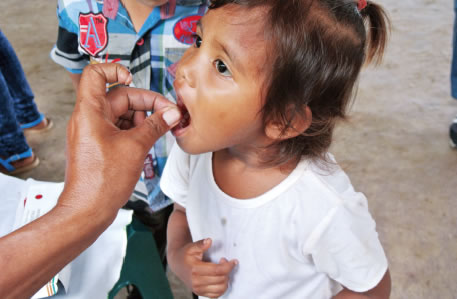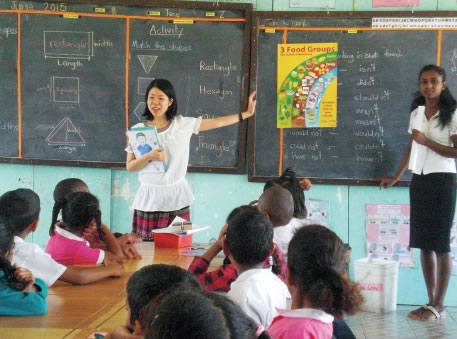(3) Food Security and Nutrition
According to “The State of Food Insecurity in the World 2015 (SOFI2015)” jointly prepared by the Food and Agriculture Organization of the United Nations (FAO), the International Fund for Agricultural Development (IFAD) and the World Food Programme (WFP), positive trends were found – the number of undernourished people in the world has decreased by more than 160 million over the last decade and by more than 200 million since 1990-92. However, the report also indicates that an estimated 800 million people still remain undernourished between 2014 and 2016.
According to the report, the goal to halve the proportion of undernourished people by 2015, which was one of the MDGs, was regarded as reached from a perspective of development, although it was not reached in terms of statistics. In the 2030 Agenda, launched as a follow-up to the MDGs, Goal 2 of the SDGs is set as “End hunger, achieve food security and improved nutrition, and promote sustainable agriculture” and efforts towards achievement of this goal are under way.
In order to achieve food security (a state where all people, at all times, can access sufficient, safe and nutritious food), there is a need for multifaceted measures based on international coordination, including not only a sustainable increase in the production of food, but also improvement of nutrition (improvement of nutrition during the first 1,000 days from a mother’s pregnancy to her child’s second birthday is particularly effective for children), establishment of a social safety net (a mechanism in which people can live safely and with peace of mind), provision of necessary food assistance, and implementation of infectious disease control in domestic animals.
<Japan’s Efforts>

A child receives vitamin A at a mobile clinic at a Community Health Center in Dili, the capital of Timor-Leste. A concentrated distribution of vitamin A to children is conducted during a month-long period every year. (Photo: Soichiro Osakabe)

A Japan Overseas Cooperation Volunteer, Ms. Atsuko Mori (nutritionist) works at the National Food and Nutrition Centre in Suva, Fiji. She visits schools as a part of nutrition education and teaches the importance of a balanced diet to children. (Photo: Asaeli Naika)
In light of these circumstances, Japan provides food assistance based on requests from developing countries confronting food shortages. In FY2015, Japan contributed a total of ¥4.03 billion through bilateral food assistance projects in 10 countries.
Moreover, Japan provides further assistance under cooperation with international organizations, mainly with WFP. These include emergency food assistance, support for school feeding programs to improve access to education, and food assistance that promotes participation of people on agricultural land and infrastructure development to support the self-reliance of local communities. In 2016 Japan contributed a total of $207.12 million to WFP projects being implemented around the world. Furthermore, through FAO, Japan provides support to technical cooperation for the agricultural and rural development of developing countries, establishment of international standards and norms in the food and agriculture fields, and the development of statistics among others.
Meanwhile, Japan provides support for research on the development of varieties conducted by the Consultative Group on International Agricultural Research (CGIAR), which is comprised of 15 agricultural research centers. Japan also promotes cooperation through exchanges among researchers.
In addition, Japan also supports the efforts of developing countries to enhance their own food safety. Concerning animal infectious diseases that spread beyond national borders such as foot-and-mouth disease, Japan is reinforcing countermeasures in the Asia-Pacific region, in cooperation with the World Organisation for Animal Health (OIE) and FAO, including the Global Framework for Progressive Control of Transboundary Animal Diseases (GF-TADs). Furthermore, Japan is deeply involved in Scaling Up Nutrition (SUN), which internationally leads initiatives to improve the condition of malnutrition.
In May 2016, the G7 Ise-Shima Summit was held under the presidency of Japan and formulated the G7 Vision for Action on Food Security and Nutrition which stated the concrete actions the G7 should take in the three prioritized areas for achievement of the G7 goal to “lift 500 million people in developing countries out of hunger and malnutrition by 2030.” The three areas are: empowering women within agriculture and food systems; improving nutrition through a people-centered approach; and ensuring sustainability and resilience within agriculture and food systems. Based on this, Japan held the International Symposium in Tokyo in October where diverse stakeholders participated in discussions about food security and nutrition.
